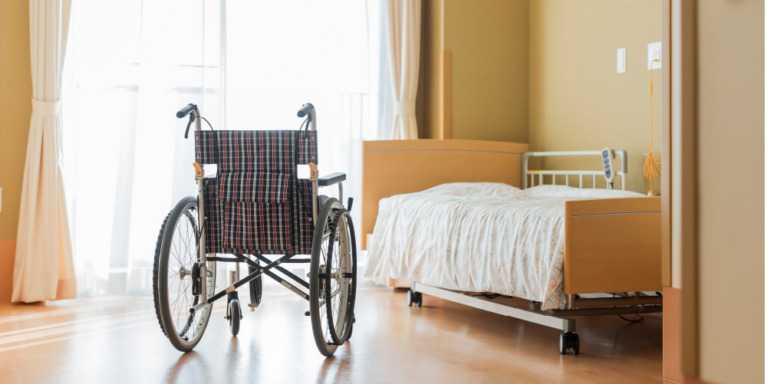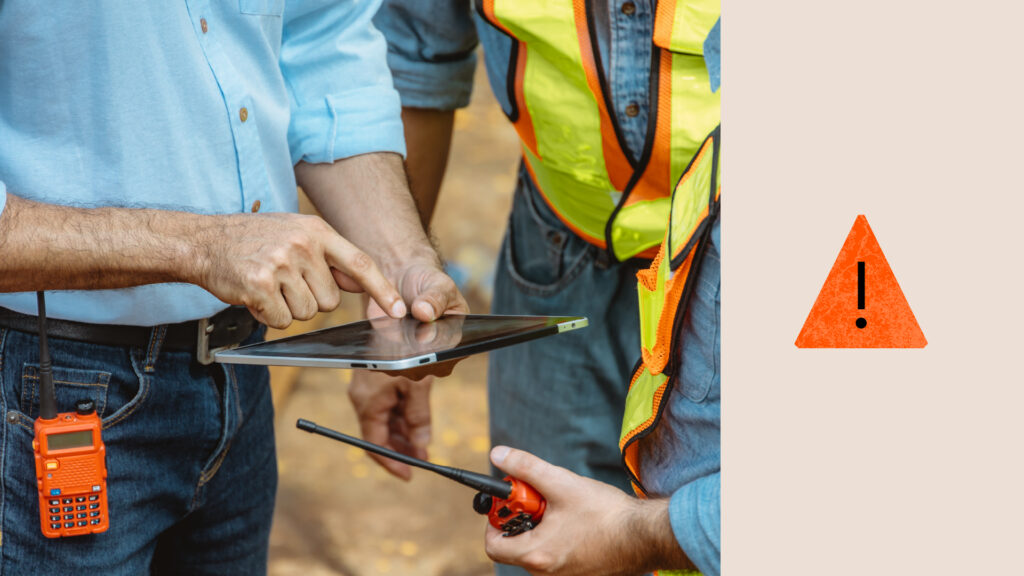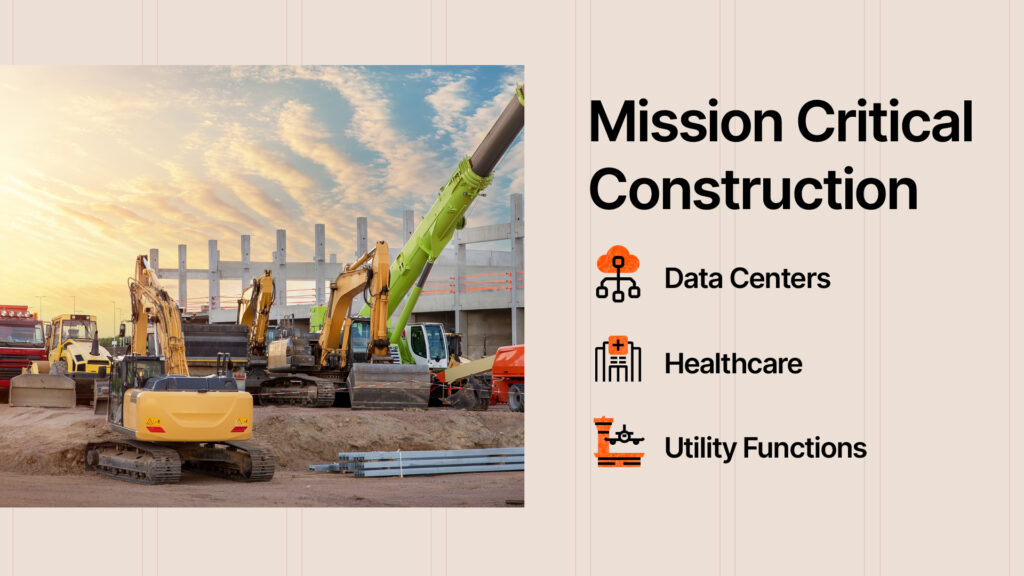— 15 min read
Senior Living Construction: Key Design & Building Considerations
Last Updated Aug 20, 2024
Last Updated Aug 20, 2024

Building senior housing is a varied, nuanced sector of construction. Continuing Care Retirement Communities (CCRCs) may encompass everything from independent living units — which are similar in need and layout to residential apartments — to skilled nursing facilities, which require many of the same capabilities as healthcare projects.
Contractors working on senior housing projects need to have a comprehensive understanding of accessibility requirements, security concerns, commercial kitchens, medical-grade equipment and medical regulations.
Owners, general contractors (GCs), and specialty contractors should also have empathy for the residents who will be occupying and using the spaces they are building and keep their needs and the use of the community at the top of their minds during construction.
Table of contents
Types of Senior Living Projects
In general, there are four types of senior housing units depending on the level of care required by the resident. The complexity of construction will typically correlate directly with the level of care.
Skilled Nursing Facility
Skilled nursing facilities (SNF) are the most complex to build. These facilities are typically for people who have experienced a serious physical trauma putting them in a position to require round-the-clock care and rehabilitation.
After being in the hospital, patients will be transferred to skilled nursing care for extended rehabilitation and access to full-time nursing staff. Sometimes, skilled nursing can be its own facility, or skilled nursing can be incorporated into a community.
Memory Care
Memory care requires far fewer medical capabilities than skilled nursing, because residents are not staying for rehabilitation or trauma care. These nursing homes are for people suffering from dementia, Alzheimers or a similar degenerative memory disorder.
The biggest considerations in memory care facilities are the safety and comfort for the residents.
Assisted Living
Assisted living is a type of residential housing option designed for seniors who require some assistance with activities of daily living, such as bathing, dressing, medication management, and meal preparation. These residents do not need the intensive medical care provided in nursing homes. Assisted living provides a balance of independence and support, offering residents personalized care plans, 24-hour staffing, and access to amenities and social activities to promote overall well-being.
Independent Living
Independent living units are designed to provide seniors with a vibrant and supportive environment where they can maintain their independence while enjoying a range of amenities and social activities. These accommodations are ideal for older adults who are able to live on their own but seek the convenience and camaraderie of community living.
Residents of independent living communities typically live in private apartments or cottages within a larger campus setting. These accommodations are designed to be comfortable and easy to navigate, with features such as grab bars, wide doorways, and step-free entrances to accommodate seniors with mobility challenges.
Preconstruction Phase
Regardless of the type of senior housing community being built, these types of projects will often require a unique approach during the initial phases of the project. During the predevelopment phase, finding the right site and developing community relationships are particularly important.
During preconstruction, owners need to understand the regulatory environment for nursing home facilities. They often select contractors based, in part, on their experience with these types of builds, estimates, and their relationships with local authorities having jurisdiction (AHJs).
It’s important to note that codes and licensing for senior living projects are always changing. Due to this, it’s key to partner with an architect and interior designer that are familiar with the local regulations. Additionally, it’s important for contractors to understand the inspection and closeout process, including steps needed to reach temporary certificate of occupancy (TCO) and certificate of occupancy(CO).
Being privy to this information upfront ensures that the proper schedule is put together and the project is executed successfully.
Community Engagement
The due diligence phase can be arduous and long, but it's absolutely essential for a smooth project lifecycle. Inviting the general contractor to participate early on is key. They help refine the project's means and methods while leveraging established relationships, which helps streamline the construction process.
Many senior living communities are built within, or near, residential communities, and homeowners are often wary of having a commercial building next door. Developers and general contractors should open a dialogue with neighbors as early as possible. Sharing plans and addressing concerns lays the groundwork for a harmonious relationship that facilitates a successful build.
Meeting with city officials and understanding regulations are some of the first steps in the construction process. Initiating conversations with community members and AHJs helps make sure the project moves smoothly.
It’s the job of the GC and developer to reassure local stakeholders that the project will bring in jobs, provide new revenue streams for the community and minimize disruptions to day-to-day life.
Neighbors may worry about the increase in neighborhood traffic or noise pollution from construction during working hours. GCs need to be transparent with neighbors about the plan, and work with them as much as possible to mitigate construction noise, traffic interruptions and other inconveniences.
Site Feasibility & Local Demographics
During feasibility studies and site selection, understanding the local demographic is critical to the project's success. It's not just about the age and number of potential residents; it's about grasping their lifestyle, income level and the community's character to ensure the community meets their needs. Seniors often prefer to move to nursing homes within the communities they already reside in and skilled nursing homes need to be close to hospitals for ease of transport and possible urgent specialized care.
Due to extensive community conversations and demographic studies, developers may choose to put a property on hold with a deposit. During that time, developers will meet with AHJs like city officials and community boards to understand permitting needs and state and local regulations and to coordinate with fire departments on safety needs.
Relationship Building & Negotiation
Navigating through the complex requirements of local jurisdictions requires more than just expertise—it's about the value provided through political connections and understanding the local landscape. A GC with deep relationships in the community can leverage their ties to streamline meetings and better work with community entities.
On one project I worked on, a developer purchased a parcel of land with the intention of building a nursing home. At the time of purchase, the land held an old sports bar. The general contractor and developer worked with the fire department to allow them to come in and use the old building as a temporary training facility – they worked with dogs, cut holes in the roof, lit it on fire and put it out. After they were done, the building was demolished. Because the building team had allowed the fire and police departments to do this training, these AHJs were more open to working collaboratively to get through complex building and safety requirements.
Bryan Magargee
Senior Strategic Product Consultant, Owners
Procore
Navigating Regulations & Due Diligence
General contractors constructing senior housing must comply with a stringent set of federal, state, and local regulations designed to ensure the safety, accessibility, and well-being of elderly residents. These regulations cover a wide range of considerations, including building codes, fire safety, Americans with Disabilities Act (ADA) requirements, healthcare facility standards, and specific environmental controls.
For example, Virginia publishes a set of standards specific to assisted living facilities that are built in the state.
Contractors must also navigate complex licensing and certification processes, adhere to strict construction timelines, and implement policies for ongoing facility maintenance and emergency preparedness.
Trusted general contractors may find developers want them to travel out of state to work on projects. This poses a new set of challenges as they need to learn local regulations. Additionally, they need to take due diligence and familiarize themselves with considerations like weather, geography and geology.
Design Considerations
Safety and accessibility are top priorities in senior living designs. Many residential communities will want nursing home projects to match their existing architectural styles, while still adhering to any local or federal regulations.
For example, in Torrance, California, developers and GCs have designed mission style buildings with tall white towers that fit in seamlessly with the existing buildings. In Flagstaff, Arizona, the structures look closer to cabins.
It’s important to incorporate design solutions in a way that avoids creating an institutional feel, while still providing comfort and addressing the needs of residents.
Designing for Safety and Comfort
Designing these communities to specifically address the needs of residents is a priority, but design teams can find a balance that doesn’t compromise style.
An example of this would be to incorporate furniture and finishes that are impermeable, scrubbable, gasketed and seamless.
Design teams should also ensure operators and owners think through the aesthetics, maintenance requirements and lifecycle costs of these changes or additions. This helps establish buy-in for style choices while maintaining the safety and wellbeing of residents.
Universal Design
When building senior living communities, universal design refers to the creation of environments that are accessible, safe and usable by all residents, regardless of their age or ability.
For example, floor transitions in an assisted living community should be carefully engineered to minimize elevation change. This creates a seamless transition from room to room and a safe environment for residents.
Tubs and showers cannot be installed normally. People recovering from surgeries or elderly patients may not be able to lift their legs over high sides, even a small lip could be a massive tripping hazard. A solution is to pour the slab lower into the ground and then float the shower right up to the floor so there is no transition or lip at all.
Bioliphic Design
Biophilic design in senior housing can have significant benefits for the health and well-being of residents by reducing stress and enhancing quality of life. This approach connects occupants to nature through natural lighting, views of nature, and other experiences of the natural world that are seamlessly integrated into their environment.
Adding intentional social spaces with large windows and indoor plants may encourage more interaction between residents in an atmosphere that feels comfortable and inviting.
Construction Considerations
Like other healthcare projects, senior living communities require strict adherence to designs and specifications to meet the specialized needs of future residents and ensure compliance with a variety of building codes.
Building Skilled Nursing Facilities
Skilled nursing facilities (SNF) have very specific rehabilitation requirements, typically including a full-sized gym. Massage tables, physical therapy spaces, weight lifting rooms and exercise machines, and cranes in patient rooms to assist in lifting in and out of bed are also common requests.
Patients need long hallways and open spaces for rehabilitation — walking down a hall and turning back around can be prohibitively difficult. One solution is to build SNFs in a square or circular format with one long hallway surrounded by patient rooms and common areas.
GCs also need to make egress considerations. Staff need to be able to get patients in wheelchairs and gurneys out of the building quickly in an emergency. These doors also need to be able to lock quickly in the case of a lockdown. One solution to this could be installing a system where doors need to be pressed down for 15 seconds to open and remain open.
Finally, nursing facilities need to be outfitted with life-saving care capabilities. Medical gases and high-grade storage centers for medication are a must. All surgeries and intense procedures will take place back at the hospital, but SNFs need to be ready to step in in any medical crisis.
Building Memory Care
Floors are especially important for memory care projects. Changing tile patterns or colors can cause confusion for patients — they may not realize the pattern has changed and think they have become lost, or a different color could be confusing spatially, and they may not want to keep walking. Similar to SNFs, one must also be careful about any kind of threshold or change in floor elevation which could be a trip hazard. These kinds of changes in elevation can typically be handled by gradually sloping the floors.
Security is extremely important. People who are confused often try to wander off or escape if they are agitated. Memory care facilities must have locking mechanisms and security stations throughout the building that are significantly more secure than in a regular nursing home. The building or memory care area of a building needs to be 100% locked down all the time, but still have safety features that allow people to escape in a fire or emergency evacuation situation. This is a system that can be put together in collaboration with the fire department.
Specialized Systems & Specifications
Senior care facilities will typically require the installation of highly specialized equipment and systems that are very similar to the construction of hospitals and other medical facilities. General contractors will need to hire specialty contractors with demonstrated experience in these types of systems.
| System | Considerations |
|---|---|
| Medical Gas | Nursing facilities typically need to have medical gas capabilities, specifically oxygen. That oxygen is usually plumbed into the building rather than having smaller bottles trucked in and out. In these cases, central storage locations can be built for all oxygen tanks. These rooms will need to have special fire safety protections and extensive lock-out/tag-out protocol. Cities and states typically have regulations for the storage of this kind of material that GCs will need to know early on to prevent any hold-ups during the inspection stage. |
| Low-Voltage Power Systems | Low-voltage systems like fire alarms and emergency call buttons are vital to these buildings, requiring specialized planning and installation that cater to the unique needs of a senior living facility. Many of the communication and safety technology needed in nursing home facilities can be wired using a low-voltage system. GCs will need to work with experts who know how to properly wire and fit the facility for this specific type of system. Call buttons in patient rooms and bathrooms, nursing station phones, alarms and door locks all work on low-voltage systems. |
| Power Backups | Along with wiring a substantial portion of the building using low-voltage power, GCs need to ensure there’s a powerful generator on site to keep life-sustaining equipment online. In skilled nursing facilities, people may be on ventilators and getting power back could mean the difference between living and dying. In memory facilities, security doors are typically run electrically, meaning a power outage could either lock everyone in, or let everyone out. On top of the generator, nursing facilities need battery packs as well as switchgear capabilities. |
| Lockout/Tagout | Lockout/tagout procedures on all utilities are of the utmost importance in these facilities. General contractors have to be familiar with advanced electrical work, plumbing and gas to ensure that any major issue on one end of the utility line won’t take out the entire facility. Having a connection with local AHJs allows GCs to begin conversations about ensuring everything is up to code before the final checks. |
Financial Planning and Cost Management
Inflation & Long-Term Budgeting
Long-term planning is inherent in the construction industry, with many projects taking years of strategizing before commencing. It's a meticulous process of balancing the vision while remaining adaptable to evolving priorities. The financial landscape can change dramatically over the years it takes to complete a senior care project.
A project that starts at $50 million can easily escalate in cost due to factors like inflation and the increasing prices of labor and materials. These construction contingencies can be built into a budget to make sure no surprises creep up at the end.
Stay updated on what’s happening in construction.
Subscribe to Blueprint, Procore’s free construction newsletter, to get content from industry experts delivered straight to your inbox.

Scope Management & Value Engineering
The key to managing project scope lies in diligent and comprehensive planning. Being thorough in every step of the construction process is a safeguard against scope creep and ensures the project is delivered successfully.
Because of the length and size of these projects, a strict adherence to the financial plan is essential. But it's equally important to recognize that the ultimate value delivered to the community often outweighs the initial cost considerations, which can fluctuate.
GCs need to make sure they aren’t cutting important corners when looking for ways to engineer value. Perhaps making a room two feet smaller could shave off $250 - $1000 per room, but if that change risks breaking regulations, it isn’t going to create value.
Post-Construction & Inspections
The extensive jobsite inspections from both state and local officials at the end of a project don’t need to be a major stress. As long as general contractors have guaranteed they’ve built everything up to code in the first place and not cut any corners, the risk of penalties and delays is low.
However, even minor issues out of compliance with regulatory or building code requirements can have devastating impacts on the closeout schedule. with if certain areas of a building, including bathrooms and common areas, do not meet ADA requirements, they might be inaccessible to residents with mobility issues. The GC will not only be required to fix the problem, they’ll have to wait for another appointment time to become available – which in some states, can take months.
Senior housing communities are typically fully staffed before they are opened, so opening delays can cost the owner upwards of $10,000 each day in staffing payroll alone.
A Final Word on Senior Care Construction
The key to any construction project is due diligence for owners, GCs, investors and subcontractors. Some projects require three years of planning before anyone puts a shovel in the ground. Acquiring proper permits can take eight months to a year if everything goes smoothly. But by managing expectations, taking care at every step, and maintaining project integrity, these can be lucrative, long-running projects that can fill out a GC portfolio.
Expanding into the senior living space can be extremely lucrative for general contractors. They’re large projects, often ranging in value from $40 million to $100 million, and can take more than 18 months to build. Often, developers will line up a pipeline of several projects, enabling GCs to build a strong backlog of senior care projects. It’s also not unheard of for developers to bring GCs along with them around the country to work on a series of projects.
Was this article helpful?
Thank you for your submission.
100%
0%
You voted that this article was . Was this a mistake? If so, change your vote here.
Scroll less, learn more about construction.
Subscribe to The Blueprint, Procore’s construction newsletter, to get content from industry experts delivered straight to your inbox.
By clicking this button, you agree to our Privacy Notice and Terms of Service.
Categories:
Tags:
Written by
Bryan Magargee
Bryan Magargee is a Strategic Product Consultant for Procore with a decade of experience in construction project management where he managed achitects, contractors and engineers. Bryan is focused on implementing technology to streamline processes, production and efficiency.
View profileCait Bladt
12 articles
Cait Bladt is a multi-award winning freelance writer and producer. Her work has appeared at Vice, ABC News and Rolling Stone among others. She currently lives in Brooklyn with her cat Patricia.
View profileExplore more helpful resources

Understanding Subcontractor Bid Packages in Construction
Construction bid packages can have a cascading impact on the success of a construction project. The quality of a bid project may affect the quality of the bids, which in...

Tackling the Top 10 Construction Industry Issues
The construction industry is constantly evolving, bringing both opportunities and challenges. Companies must navigate an array of construction industry issues — from workforce shortages to integrating new technologies into their...

Mission Critical Construction: Strategies for Success
Mission critical construction involves building structures whose functions cannot afford to fail, as any disruptions can lead to significant consequences for society. Keeping data centers, hospitals, power plants and other...

Modular Construction and MEP: A Collaborative Pairing
In an age of supply chain disruptions, workforce shortages, and rising material costs, off-site construction — including modular construction methods and prefabricated materials — is surfacing as a multipurpose solution....